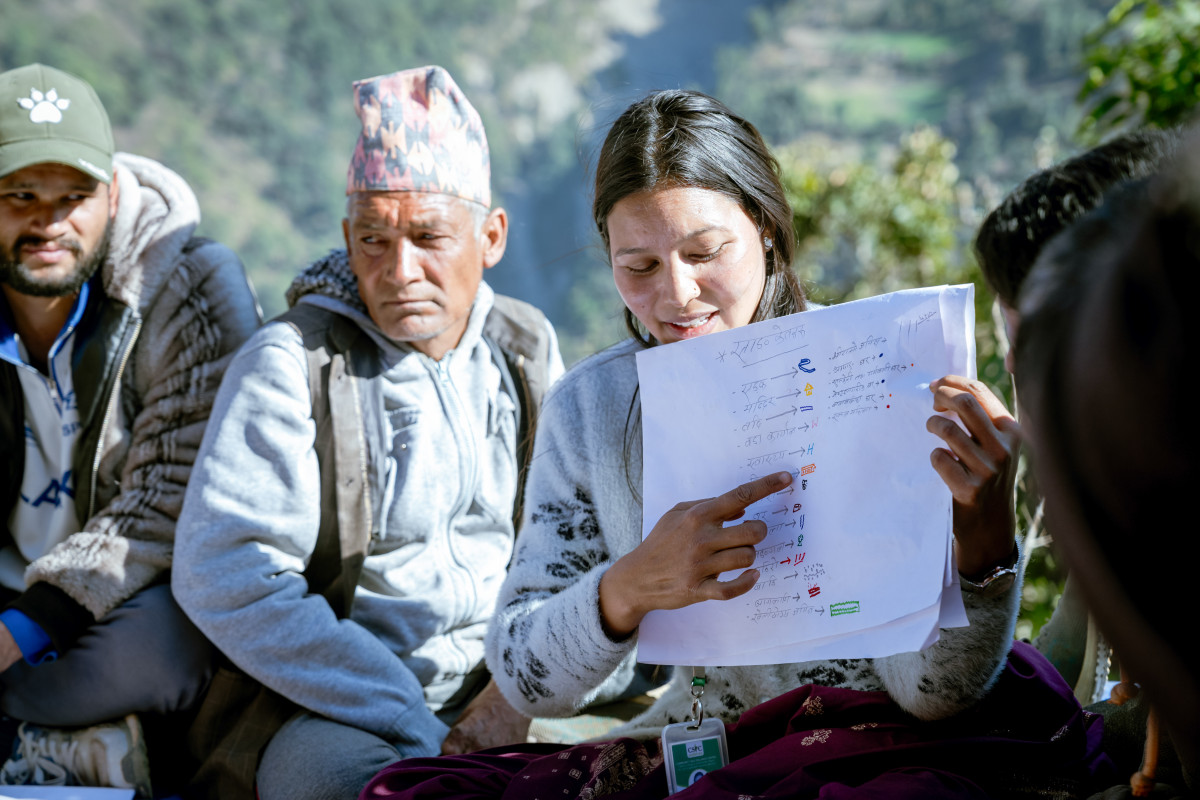Anticipate. Alert. Act: Early Warning Saves Lives
Published: Oct 9, 2025 Reading time: 4 minutes Share: Share an articleFloods, typhoons, droughts, landslides, earthquakes and wildfires are striking more often and with greater force as climate change progresses. At People in Need (PIN), we help communities prepare before disaster hits. We also work to ensure that they recover more resiliently—combining preparedness, anticipatory action, adaptation and early warning so that lives, livelihoods, and progress are protected. From training local response teams to building technology, we put practical tools in the hands of people who most need to mitigate impacts of disasters.

On this International Day for Disaster Risk Reduction, we recognise that while we cannot prevent all natural hazards, early action and preparedness are crucial for building a safer, more resilient future for everyone.
Early Warning Systems—More Than Messages
Effective Early Warning Systems (EWS) are far more than a network of sensors or a burst of text alerts. They connect hazard monitoring, scientific forecasting and community knowledge, then translate those signals into clear, timely, life-saving warnings. Through varied communication channels—voice calls, SMS, radio, Telegram, village loudspeakers, and even bank systems—we help ensure that everyone receives and understands alerts in time to act. Our service users range from farmers in remote valleys, shopkeepers in crowded towns, and families in isolated hamlets.
Cambodia—From Pilot to National System
In 2013, Cambodia experienced frequent floods but lacked a structured warning service. In response, we piloted our Early Warning System: EWS 1294. In three villages, we provided real-time flood alerts using a simple voice hotline to anyone who dialled in.
What began as a small pilot is now a nationwide success: the Royal Government of Cambodia now operates EWS 1294 as the official EWS for Cambodia. Across all provinces, warnings were delivered through SMS, voice messages, radio and social media. Millions of Cambodians now get crucial information hours earlier, allowing them to evacuate safely or protect their homes and harvests.
Laos—Strengthening the Last Mile
Neighbouring Laos confronts recurring floods, droughts, and landslides that often hit remote mountain communities first. Building on lessons from Cambodia, we work with local authorities to improve the reach and reliability of existing early warning services. By enhancing community networks and supporting local volunteers, we help ensure that warnings travel the “last mile”. In other words, they get to the people who need them most—quickly, clearly, and in languages they trust.
Testifying to the efficacy and uptake of the system in Laos, 50,000 users registered for the EWS and 4137 warning alerts were sent in the second half of September.
Philippines—Acting Before the Water Rises
The Philippines faces some of the planet’s most powerful storms, with flash floods a constant threat.
Drawing on our Cambodian experience, and with local partners, we upgraded flood-monitoring sensors and developed a mobile-based alert system in 15 remote Mindanao communities. Training for local officials and community leaders means they can issue pre-emptive evacuation orders and organise shelters before floodwaters rise—proving that advance action saves lives and reduces damage.
Nepal—Forecasts and Community Preparedness
In Nepal’s steep, landslide-prone hills, a single night of heavy rain can trigger disaster.
We use national weather forecasts and empower trained disaster-risk teams to track rainfall, identify danger zones and warn residents in time to move to safety. This blend of science-based forecasting and community monitoring helps families sleep soundly during the monsoon, knowing that an alert will come if the ground begins to shift.
Bosnia and Herzegovina—Detecting Fire Early
Wildfires increasingly threaten forests and villages across Bosnia and Herzegovina. Together with local authorities, we are installing a network of smoke sensors and a connected early warning system that speeds detection and response.
Early alerts, together with custom-made drones for fire detection, and vital radio communication systems, give firefighters and residents precious time to act, stopping small blazes from becoming large-scale disasters.
Marking International Day for Disaster Risk Reduction
On International Day for Disaster Risk Reduction, we celebrate the power of preparedness and the collective effort behind every saved life. Every alert sent, every community trained, and every partnership forged proves that early action works and that knowledge shared today can prevent tragedy tomorrow. By strengthening warning systems and helping communities adapt, we show that while we cannot prevent all natural hazards, we can transform potential catastrophes into manageable challenges—and build safer futures for generations to come.



